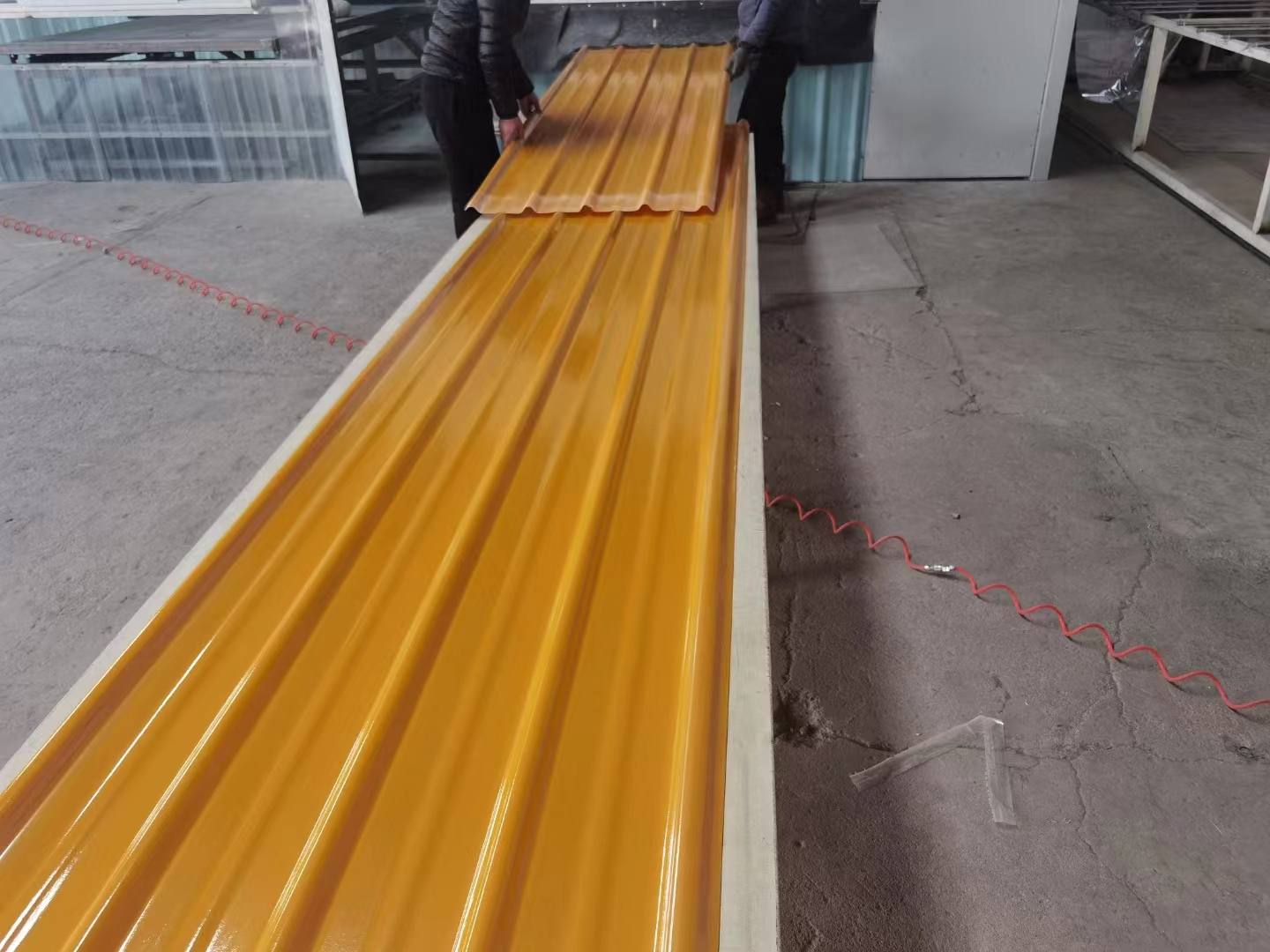
FRP sheets are high-strength, corrosion-resistant materials composed of resin and glass fiber. They find wide applications in construction, transportation, chemical industries, and beyond. Two main manufacturing processes exist for FRP sheets: the hand lay-up process and the mechanical continuous forming process. Each has its own set of advantages and disadvantages, requiring users to make comprehensive considerations based on their specific needs and conditions. This article aims to briefly introduce and compare these two processes, providing users with valuable insights for decision-making.
The hand lay-up production process represents a traditional method for crafting fiberglass reinforced plastic panels. It involves the manual application of resin and glass fiber onto a mold, layer by layer, followed by curing, demolding, and trimming to produce the desired FRP panels. Its advantages lie in its simplicity of operation and low equipment investment. This process can produce FRP panels of various shapes and sizes, making it suitable for small-batch and multi-variety production. However, drawbacks include lower production efficiency, inconsistent quality, susceptibility to manual errors, and potential environmental pollution and occupational hazards.
On the other hand, the mechanical continuous molding process represents an advanced technique for manufacturing FRP panels. It utilizes mechanical equipment to continuously feed resin and glass fiber into the mold, followed by heating, pressure application, cooling, and other steps to produce the desired FRP panels. Its advantages include high production efficiency, consistent quality, suitability for large-scale continuous production, and reduced environmental pollution and occupational hazards. However, this process is characterized by complex operation and high equipment investment. It can only produce FRP panels of specific shapes and sizes, making it ideal for large-volume single-variety production.
In summary, the hand lay-up production process and the mechanical continuous forming process represent two distinct methods for manufacturing fiberglass paneling, each with its own set of pros and cons. Users should carefully weigh their options based on their specific requirements. Generally, the hand lay-up process is preferable for small-scale production involving complex shapes and multiple varieties, while the mechanical continuous molding process is suitable for large-scale production of simpler shapes and single varieties. However, this is not a rigid rule, and users can conduct a thorough analysis considering factors such as market demand, cost-effectiveness, and technical capabilities to determine the most suitable process for their needs. We hope this article proves helpful to users. Should you have further questions, do not hesitate to consult with our professionals.












